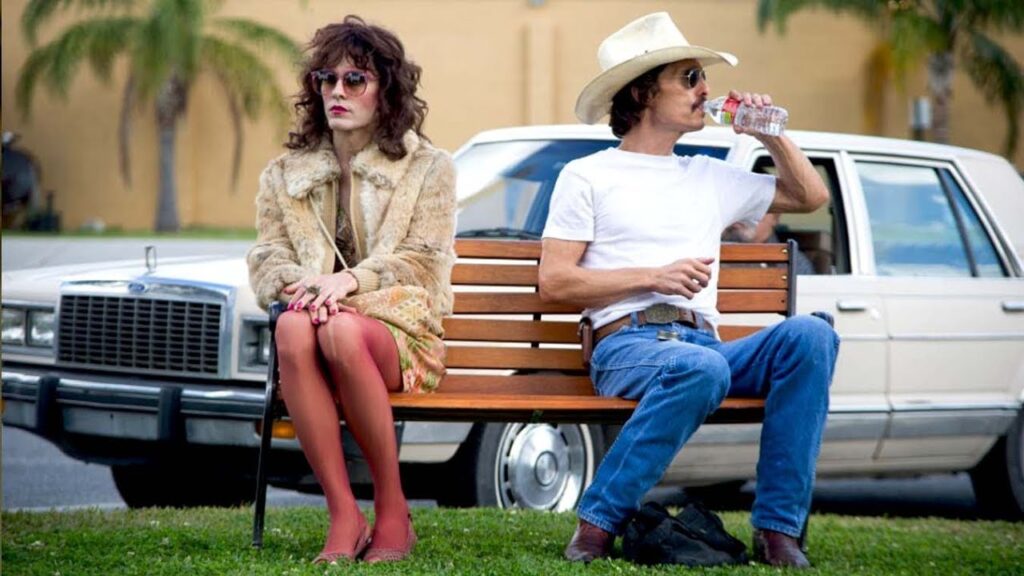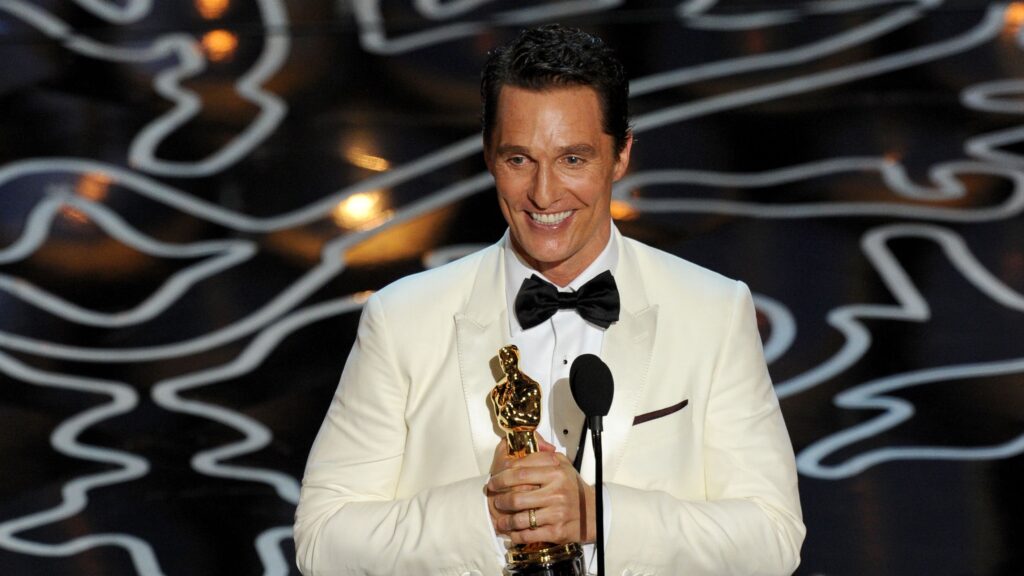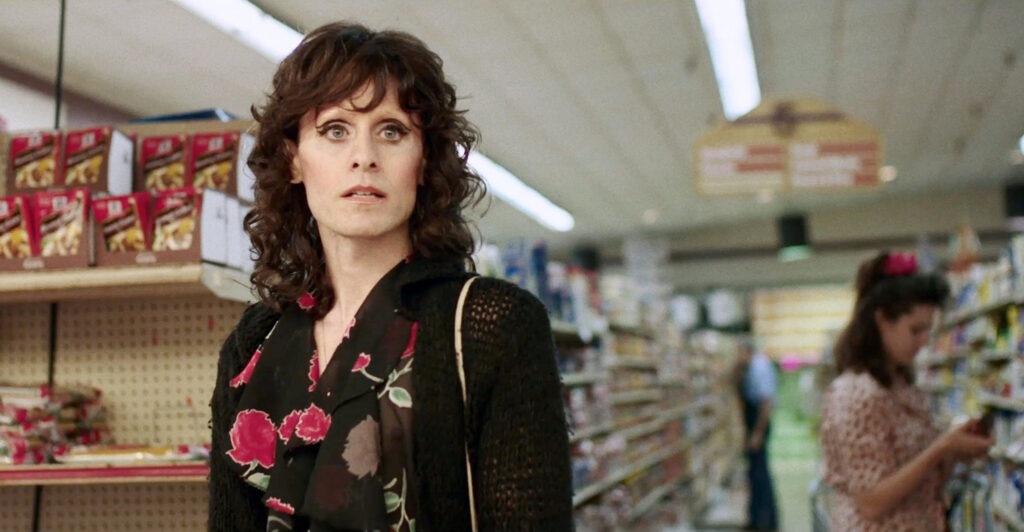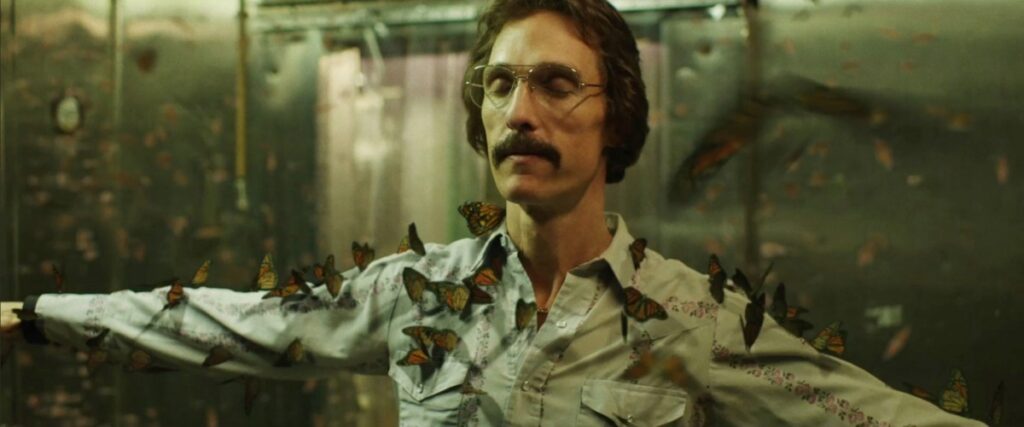
Dallas Buyers Club is a hero’s journey illustrating how hardship has a way of unlocking incredible human potential. That is, if we consider a degenerate homophobe as the “hero”, and the death sentence of AIDS as the journey.
If human potential were a long spectrum, Ron Woodroof (Matthew McConaughey) would hold a sizeable lead on the tail end of it. His life revolves around booze, cocaine, hookers, and unfettered use of racial and homophobic slurs. He is the epitome of filth, both physically and spiritually, making his contraction of the HIV virus seemingly inevitable. He is told that he has 30 days to live, and he suddenly finds himself in a community of ill patients desperately looking for whatever they can to stay alive. His search takes him to Mexico, where an unlicensed doctor provides a combination of drugs that could effectively treat the virus and prolong a victim’s life. A few discussions later, Ron is loading his car with bulk quantities of them, hoping to sell them for HIV victims in need. However, because they are drugs unapproved by the FDA, Ron must circumvent their policies by giving these drugs to people for free, while selling memberships. Ron’s operation and its members become the “Dallas Buyers Club”. Ron’s journey from there is one full of lessons, heartbreak, and redemption.
Dallas Buyers Club won both Matthew McConaughey and Jared Leto Oscars, which were well deserved. Not only did they lose an unhealthy amount of weight for their roles, but I also completely forgot that these were actors playing characters at some point. Aspiring thespians should look towards these performances to see what dedication to a role really means. But a lot of how much an actor’s performance stands out rests on the quality of the movie itself. We’ve all seen plenty of movies with A-list casts but C-tier stories that don’t win anything. I think what allowed McConaughey and Leto to stand out that year was Dallas Buyers Club’s strong attention to character work. Even more brilliant is how simply it is executed.

SPOILERS!!
Imagine a gradient going from black to white. It has five parts. There are the black and white ends, the complete contrasts. Then there is the middle, where the black gradually fades into gray, until there is a distinct point where there is more white than black, then white takes over until it is solid white. Now apply this gradient to Matthew McConaughey’s character throughout the Dallas Buyers Club runtime.
Character change is one of the most important aspects of all narrative stories. According to “Proof of Concept: Writing the Short Script” by Keith and Juliet Giglio, “Your protagonist should transform throughout the course of the story…A plot is only as good as it’s character’s transformation”. Plots often stem from character, and there wouldn’t be one if the character was static.
We first see Ron Woodroof on the dark end of the spectrum, having intercourse with strangers, spewing slurs, and ruining his body with drugs. The movie isn’t trying to be subtle here. Ron Woodroof is a despicable person. After word gets out about his AIDS diagnosis, however, he is quickly shunned by his community. One day, he collapses and wakes up in a hospital bed next to a gay AIDS patient, Rayon (Jared Leto). Although he makes sure to distance himself, Ron plays poker with him to pass the time. Later, when Ron is looking to find customers for medication he brought from Mexico, he reluctantly frequents gay bars, and decides to form a partnership with Rayon. Slowly but surely, we see Ron’s twisted world view fade from black. Then comes the halfway point of Ron’s character gradient. The definitive shift from one form to another.
Ron and Rayon are grocery shopping, and we see a fun back and forth between Rayon just wanting to get it over with, and Ron refusing to buy anything with preservatives. He’s clearly paying more attention to his health than he was before. But more importantly, Ron runs into his old friend, who sees Rayon and immediately calls him a slur. Ron’s friend is a representation of his old self. Ron holds his old friend into a headlock and forces him to shake Rayon’s hand. He came face to face with his old self and showed us he was different. We now know for sure that Ron’s stance on the gay community has changed, and that he understands his past actions were wrong. While I’m not sure if this was intentional, this moment also happens almost exactly at the halfway point of the movie’s runtime.

Next is his journey to the other end of the spectrum. He hires an African American secretary, he is aided by a gay couple to continue his operation from the grasps of the FDA, and he hugs Rayon when Rayon is nearing his deathbed. A definitive character moment for him was after Rayon died, when he hired a stripper to try to forget his distress. For a moment, he tried to revert to his old self, the one who would have enjoyed the stripper and not have cared about what happened to Rayon. Instead, he breaks down in the middle of the show, overwhelmed by his loss. We now know his character has changed fundamentally, no longer in any grey area. He is unrecognizable from his former self.
The gradient-like change was crucial for the audience’s investment in McConaughey’s character. There wasn’t a single event that brought on a drastic and unjustified change, as is so often the case with some films. Instead, we see a series of seemingly random incidents, all of which develop Ron Woodroof little by little, accumulating to make a new person in the end. He didn’t go to the grocery store because the plot needed him to, his character went to the grocery store, and the plot unfolded as we saw it change.

Dallas Buyers Club is a story full of heartbreak, feel-good moments, and insight into the AIDS crisis and pharmaceutical corruption. The character work I discussed is only a fraction of what made this film so great, and I highly recommend that you watch it for yourself to get the full experience.